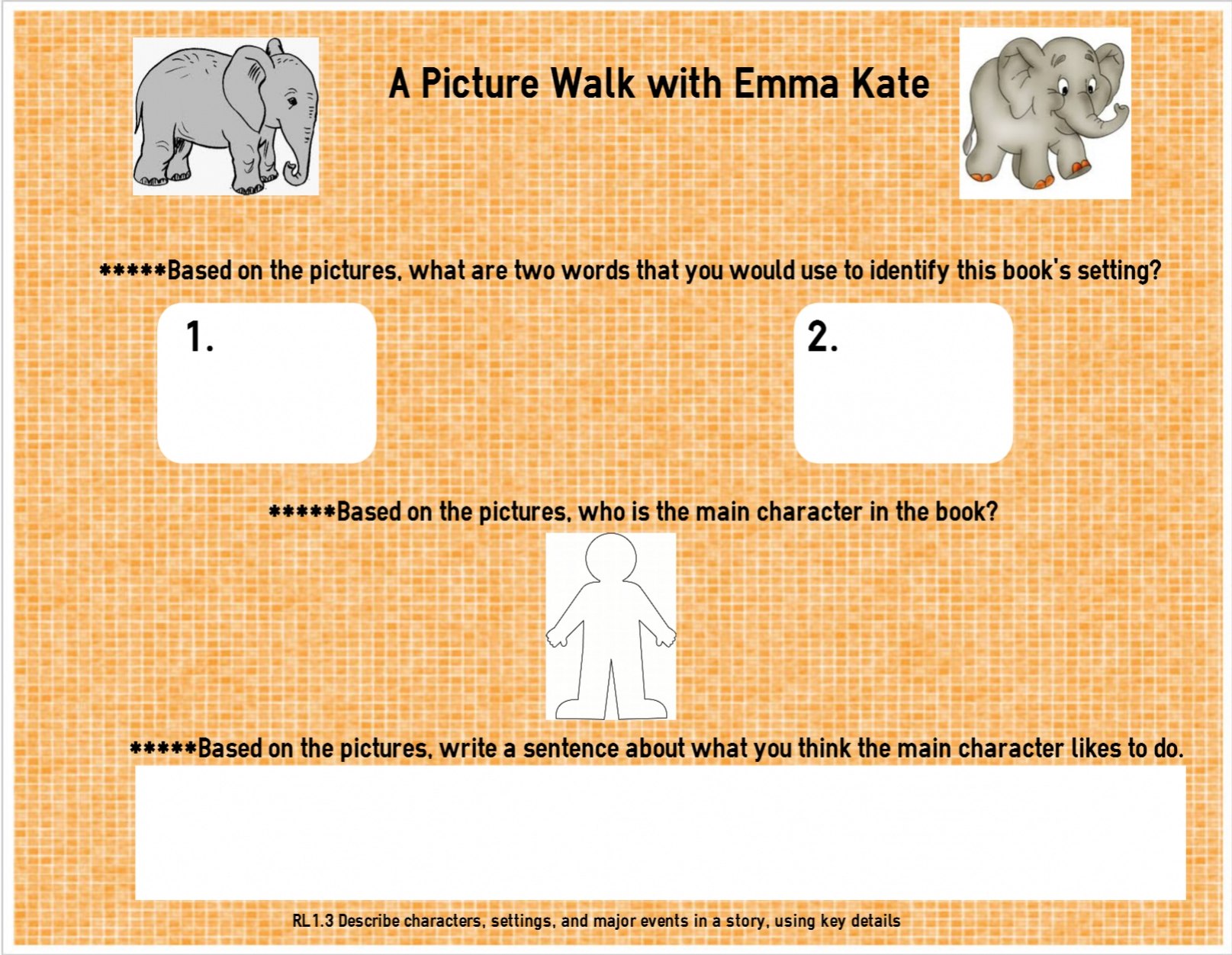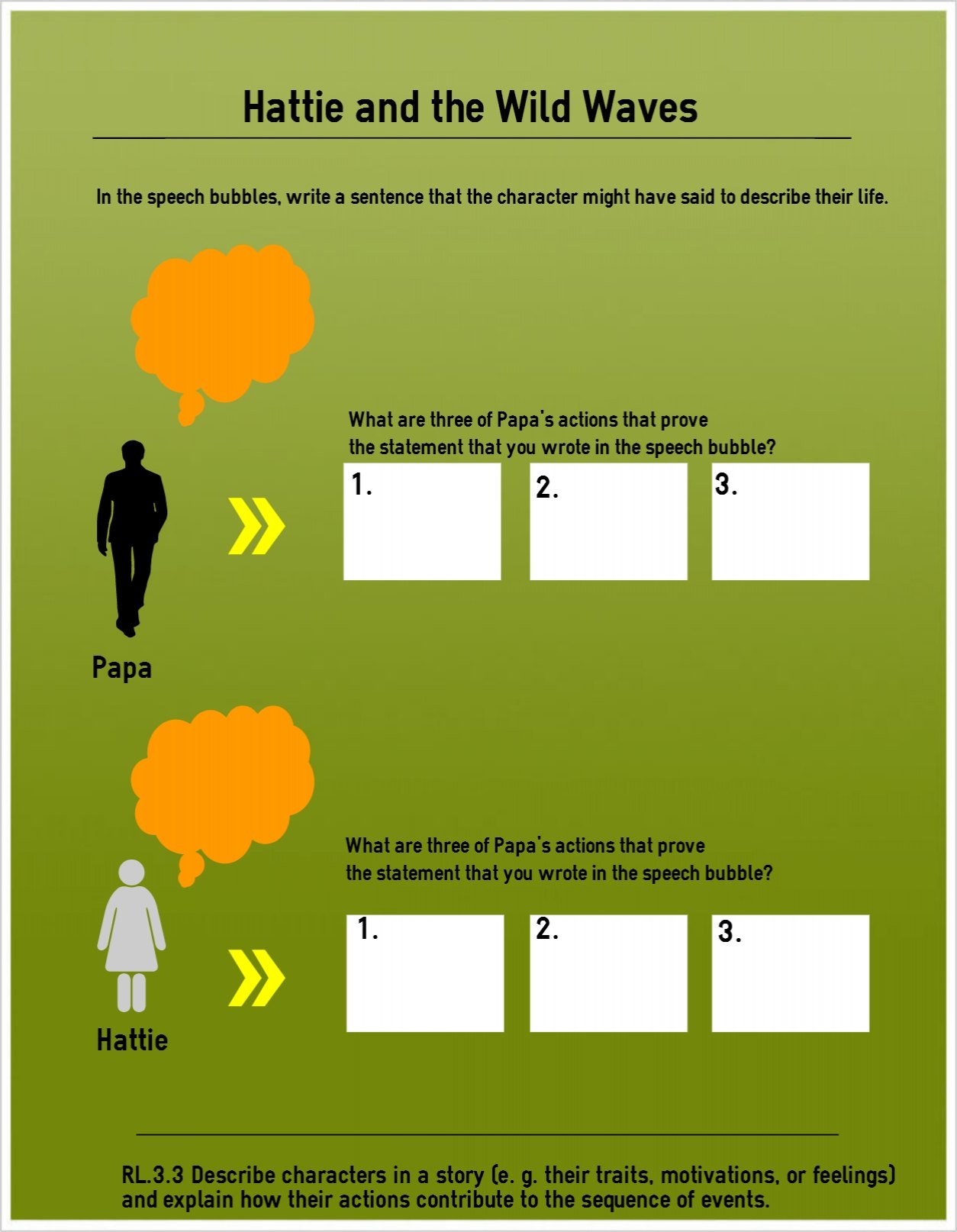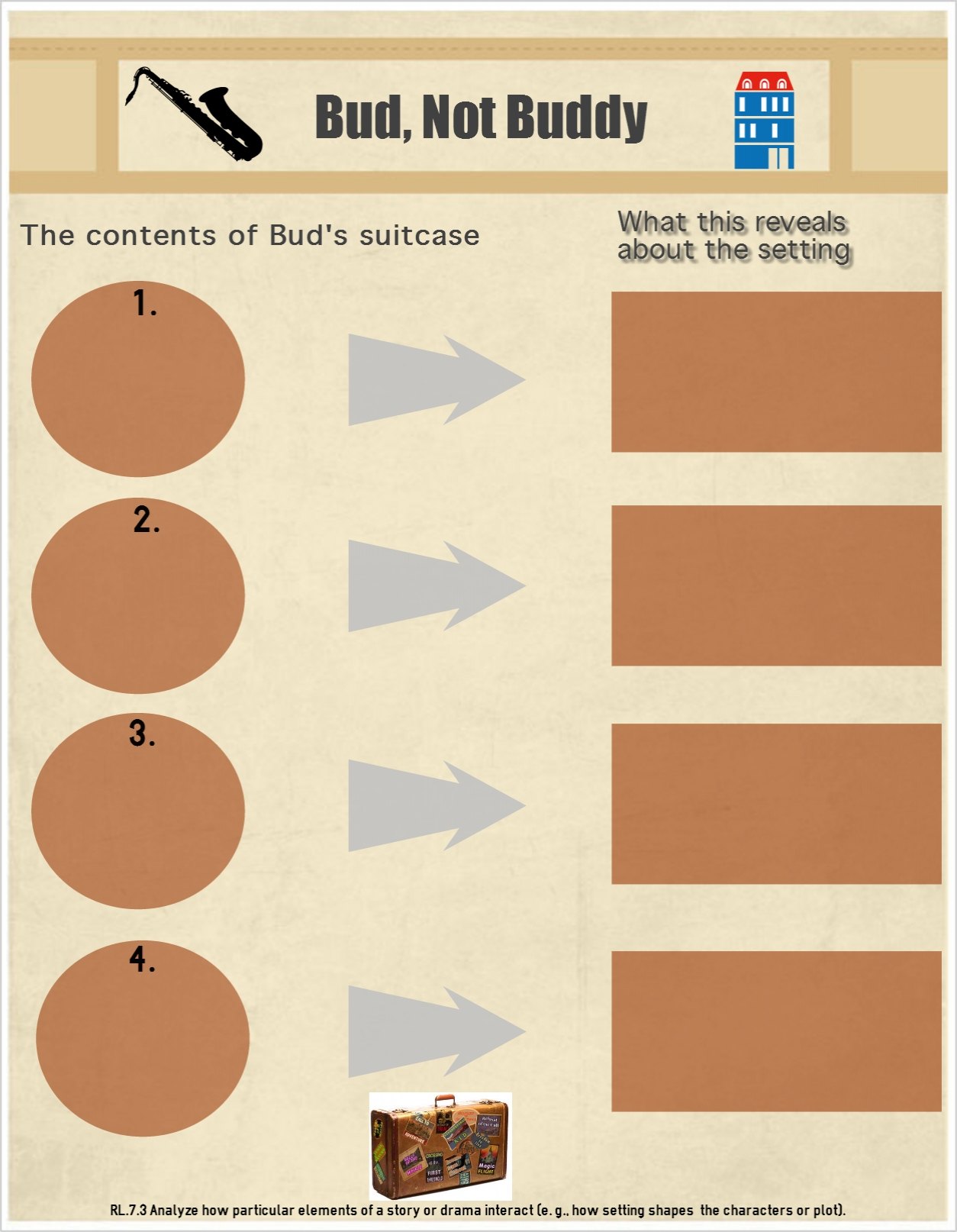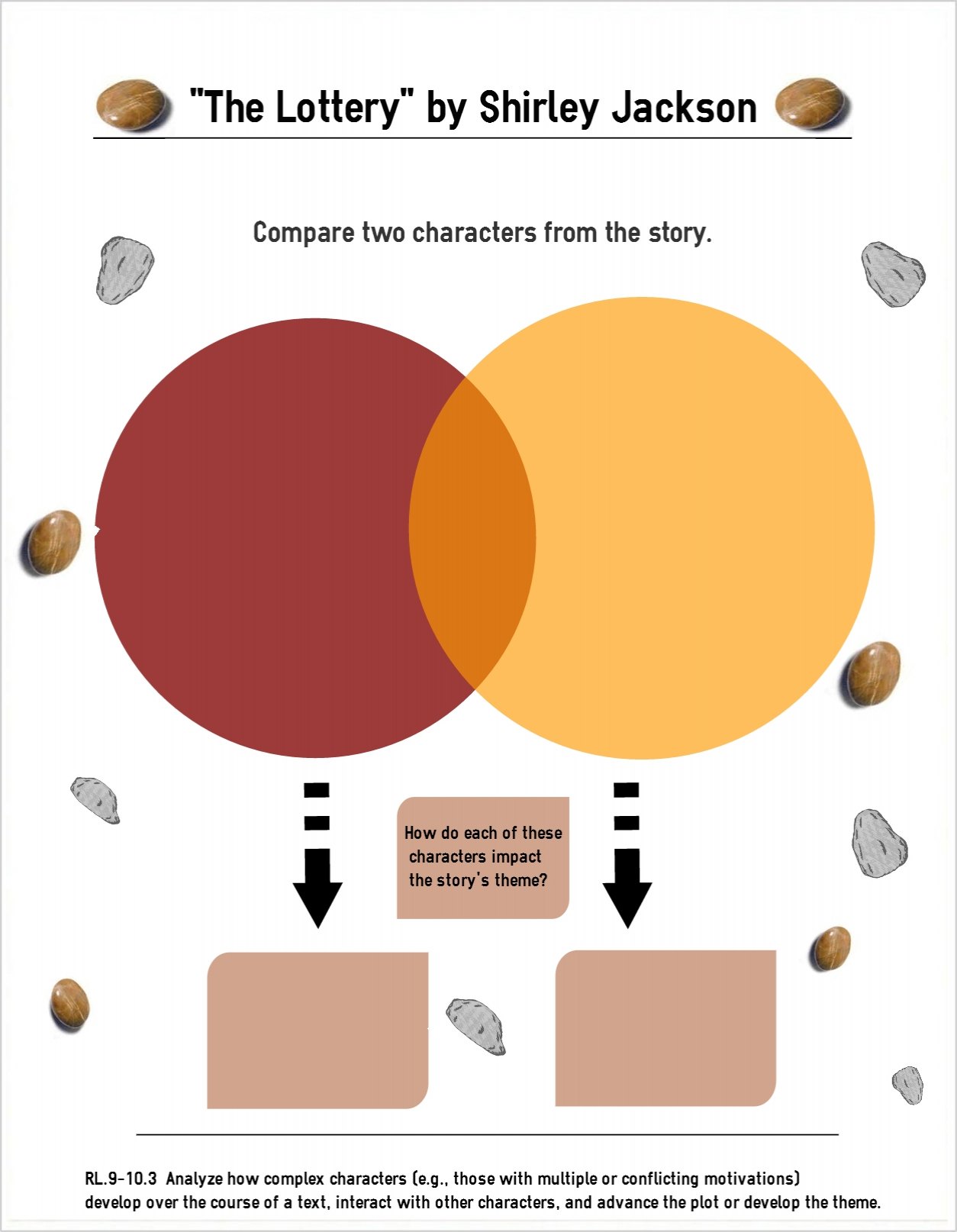Fictional literature creates authentic experiences to actively engage students through their connections with fictional characters. As we explore the last of the Reading Literature ELA CCSS from the Key Ideas and Details section of the standards, activities will be provided that show how to create connections between characters, including their expressions, actions, and dialogue as it relates to a story’s plot line.
Kindergarten – 2nd grade teachers:
If you are ready to look inside the lives of characters living inside primary-aged children’s books, let’s take a quick look at the related Kindergarten, first and second grade standards for Reading Literature Standard 3:
- CCSS.ELA-Literacy.RL.K.3 With prompting and support, identify characters, settings, and major events in a story.
- CCSS.ELA-Literacy.RL.1.3 Describe characters, settings, and major events in a story, using key details.
- CCSS.ELA-Literacy.RL.2.3 Describe how characters in a story respond to major events and challenges.
First grade students will love Patricia Polacco’s adorable story, Emma Kate, about a young girl and her unique best friend. The following vheme creates an opportunity to complete a picture walk through the book’s illustrations, prior to reading.
Other extension ideas related to this picture book:
Have students complete the same vheme after reading the book. Then, discuss how their pre-reading and post-reading answers changed.
Have students create a vheme that describes Emma Kate.
3rd – 5th grade teachers:
Beginning in third grade, students begin to make predictions relating to a character’s motivations. Additionally, the fifth grade introduces the concept of comparing and contrasting characters. If this sounds of benefit to you, take a closer look at the following ELA CCSS standards for grades third through fifth:
- CCSS.ELA-Literacy.RL.3.3 Describe characters in a story (e.g., their traits, motivations, or feelings) and explain how their actions contribute to the sequence of events.
- CCSS.ELA-Literacy.RL.4.3 Describe in depth a character, setting, or event in a story or drama, drawing on specific details in the text (e.g., a character’s thoughts, words, or actions).
- CCSS.ELA-Literacy.RL.5.3 Compare and contrast two or more characters, settings, or events in a story or drama, drawing on specific details in the text (e.g., how characters interact).
Students in third grade will love exploring Hattie and the Wild Waves, which tells the story of a family and each family member’s dreams. This interactive vheme can be used as a post-reading formative assessment.
This picture book will work well with third grade students, as they reflect on how characters reveal their feelings and personalities.
Other extension ideas related to this picture book:
- Create a vheme that compares and contrasts two of the children in the book.
6th – 8th grade teachers:
The middle school years bring increased emphasis on pinpointing specific statements, incidents, and related events from fictional characters. Specifically, the following standards show how one or more fictional elements directly impact characters and their related plot lines:
- CCSS.ELA-Literacy.RL.6.3 Describe how a particular story’s or drama’s plot unfolds in a series of episodes as well as how the characters respond or change as the plot moves toward a resolution.
- CCSS.ELA-Literacy.RL.7.3 Analyze how particular elements of a story or drama interact (e.g., how setting shapes the characters or plot).
- CCSS.ELA-Literacy.RL.8.3 Analyze how particular lines of dialogue or incidents in a story or drama propel the action, reveal aspects of a character, or provoke a decision.
Christopher Paul Curtis captures readers’ interest with his story of Bud, a young boy, who is searching for his biological father in Bud, Not Buddy. The following vheme can be used by students to analyze the setting’s significance throughout the book. Additionally, this graphic organizer could be used to analyze a specific chapter’s events.
Other extension ideas related to this picture book:
- Have students create a vheme to show what four items they would place in their suitcases. They should connect each item to their settings, analyzing what the item reveals about their location and personality.
9th – 12th grade teachers:
During high school, students’ attention is drawn to how authors structure key details and ideas in a fictional text. Careful analysis relates to how fictional elements, including how the setting and conflicts directly relate to a character. The following Reading Literature standards directly correlate with emphasizing this component of character analysis:
- CCSS.ELA-Literacy.RL.9-10.3 Analyze how complex characters (e.g., those with multiple or conflicting motivations) develop over the course of a text, interact with other characters, and advance the plot or develop the theme.
- CCSS.ELA-Literacy.RL.11-12.3 Analyze the impact of the author’s choices regarding how to develop and relate elements of a story or drama (e.g., where a story is set, how the action is ordered, how the characters are introduced and developed).
“The Lottery” by Shirley Jackson takes students back in time to a small town that has a questionable means of bringing good luck to their village. Students can use the following vheme, which can be found at “The Lottery” as a point of discussion in a cooperative learning group to reflect on the significance of two characters in this story.
Other extension ideas related to this text:
- Create a vheme on Easelly to map one character’s development throughout the picture book.
Quick Reminder
Each of the activities shared incorporates fictional literature works with character analysis that can assess students’ understanding of Reading Literature, Standard 3. Next week, we will be taking a closer look at Reading Information, Standard 3 where a number of activities will be provided to spotlight how key individuals have impacted historical events.



